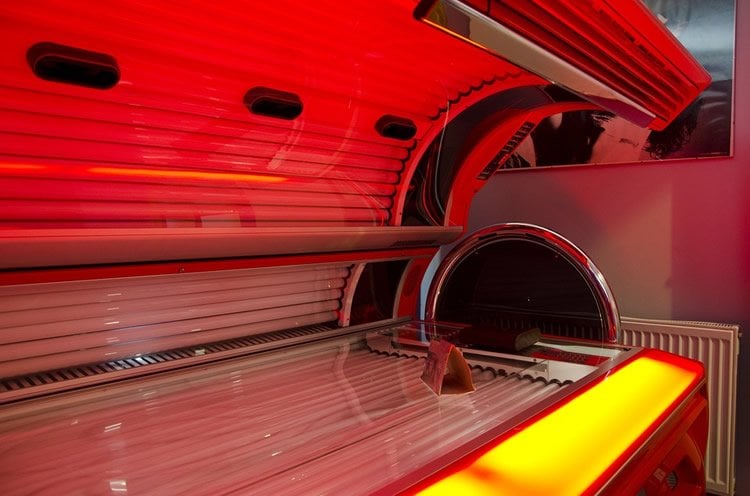Tanning activates addictive pathways in the brain.
Researchers from the University of Colorado Anschutz Medical Campus have shown a direct link between indoor tanning and substance abuse among Colorado high school students.
“A growing national body of evidence links indoor tanning with other risky health-related behavior among adolescents,” said study author Robert Dellavalle, MD, associate professor of dermatology at the University of Colorado School of Medicine.
The study, which appears in the most recent edition of the JAMA Dermatology, says the motivation behind indoor tanning offers clues to why it is also tied to other risky behaviors.
Dellavalle, who also practices at the Denver Veterans Affairs Medical Center, said people tan for both psychological and physiological reasons.
“For example, indoor tanning and use of steroids may both stem from the motivation to enhance one’s appearance,” he said. “Data also implicate addictive physiological pathways in indoor tanning that may be similar to those of substance abuse.”
Research has shown that indoor tanning can release endorphins in users that can be addictive.
The study used the Healthy Kids Colorado Survey of health data from Colorado public schools. A total of 12,144 students answered the question, “During the last 12 months, how many times did you use an indoor tanning device such as a sunlamp, sunbed or tanning booth?”
The analysis showed females were almost twice as likely to engage in indoor tanning as males. Researchers also found that any lifetime use of steroids was the variable most strongly associated with indoor tanning, especially among males.
“Any alcohol consumption within the prior 30 days and marijuana use were also associated with indoor tanning, as was lifetime use of select illicit drugs,” the study said.
Dellavalle said indoor tanning is potentially dangerous.

The World Health Organization has deemed UV radiation as a group 1 carcinogen putting users at a higher risk of melanoma, basal cell carcinoma and squamous cell carcinoma.
“Risky behaviors tend to go together,” Dellavalle said. “So someone who does indoor tanning may more easily move on to other risky behaviors like illicit drug use.”
The researchers urged physicians treating those who use indoor tanning to consider assessing them for steroid use, especially if the patient is an adolescent male. They also said parents should get involved.
“If you are a parent and your child is tanning,” Dellavalle said, “you should also check for drug abuse.”
The study co-authors include Myra Sendelweck, ME, of CU Anschutz, Eric Bell, PhD, Amy Marie Anderson, MPH, Kurt Ashack, BA, Talia Pindyck, MD, Cate Townley, MURP, MUD.
Source: David Kelly – University of Colorado Anschutz Medical Campus
Image Credit: The image is in the public domain
Original Research: Abstract for “Associations Between Indoor Tanning and Substance Use Among Colorado High School Students” by Myra A. Sendelweck, ME; Eric Bell, MPH; Amy Marie Anderson, MPH; Kurt Ashack, BA; Talia Pindyck, MD; Cate Townley, MURP, MUD; and Robert P. Dellavalle, MD, PhD, MSPH in JAMA Dermatology. Published online January 20 2016 doi:10.1001/jamadermatol.2015.5663
Abstract
Associations Between Indoor Tanning and Substance Use Among Colorado High School Students
This study analyzes results from a survey of Colorado high school students to examine state-level associations between substance use and indoor tanning.
The World Health Organization classifies UV radiation as a group 1 carcinogen and deems the use of tanning devices that emit UV radiation a risk factor for melanoma, basal cell carcinoma, and squamous cell carcinoma. Nonetheless, about 1 in 5 adolescents have used a UV tanning bed in their lifetime.
“Associations Between Indoor Tanning and Substance Use Among Colorado High School Students” by Myra A. Sendelweck, ME; Eric Bell, MPH; Amy Marie Anderson, MPH; Kurt Ashack, BA; Talia Pindyck, MD; Cate Townley, MURP, MUD; and Robert P. Dellavalle, MD, PhD, MSPH in JAMA Dermatology. Published online January 20 2016 doi:10.1001/jamadermatol.2015.5663






